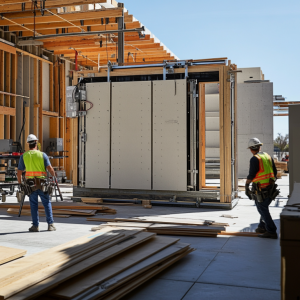
ON, Canada, 21 September 2024- Time really flies as construction faces innovation in new building supplies and novel tools now and then. From smart, high-tech tools to sustainable, modular materials, they each help professionals and DIYers complete projects faster and with better precision.
Whether a contractor building large-scale developments or a homeowner starting their renovation project, here are new developments in building supplies you will surely want to consider. This article will discuss the most up-to-date advancements that help change the way we think about construction and what’s in store for the future. Some of these include:
1. Smart Tools: Technology Meets Precision
One no longer has to depend wholly on traditional tools at the job site. With sensors and digital interfaces, the emergence of smart tools has bridged many tasks on the construction site. These tools are designed to make many tasks more precise and eliminate human error; thus, they become irreplaceable in small and large projects.
- Smart Laser Levels:These days, smart levels can do much more than just measure. With Bluetooth capability, they connect with mobile apps that provide real-time readings, align walls, foundations, and beams perfectly.
- Digital Tape Measures:In addition, digital tape measures feature memory for storing recordings and notes on-site to help minimize errors and save considerable time in finishing projects.
- Why It Matters:Precision in construction is paramount. Smart tools reduce measurement errors, save time, and therefore resources in the course of the project.
2. Modular Materials: Building Flexibility
Probably one of the most exciting developments in the field of building supplies has to be those involving modular materials. These pre-fabricated elements are supposed to fit together like so many pieces of a jigsaw puzzle, speedier construction, and a greener one at that. Well-suited for residential and commercial use, flexibility in modular materials does not imply a lack of strength or durability.
- Modular Concrete Panels:These are those that could be custom-designed and pre-built off-site, therefore allowing quicker installation on-site with only a handful of on-site labor. They further minimize waste because they are made to fit the specific designs.
- Low-Carbon Footprint Engineered Wood Systems:While wood has always been in construction, now there are systems of modern timber that meet the eco-friendly criteria. Such material undergoes processing to ensure that it has a minimal carbon footprint and, hence, will prove to be a perfect fit for green construction.
- Why It Matters:The more time saved by modular materials, the more sustainable the process will be; two major factors at play in today’s times.
3. Sustainable Building Supplies: Green Construction
With sustainability being one of the top priorities, construction companies these days are on the lookout for building supplies that fulfill the standard requirement without affecting the aspect of the environment. These materials lead in carbon emission reduction, energy efficiency, and waste minimization.
- Recycled Steel:Steel is one of the top construction materials that are considered based on the demand for sustainability. To begin this, companies are now producing recycled steel with the same strength but a much lower environmental impact.
- Eco-Friendly Insulation:Traditional insulation often utilizes types of materials that are not exactly friendly to the environment. Now, with new eco-friendly alternatives—such as cellulose insulation made from recycled paper—the same or even more energy-saving benefits are derived from a much more sensitive environmental approach.
- Why It Matters:With sustainability becoming an increasingly important concern, the use of eco-friendly materials can facilitate green building certifications and further reduce the environmental impact of building projects.
4. 3D Printing: The Future of Construction
Perhaps one of the most exciting innovations in building technologies, 3D printing enables this advanced technology to print everything from small-scale models down to full-scale houses. In return, 3D printing provides immense leeway over the extent to which more creative designs can be achieved—and with quicker build times.
- On-site 3D printing:3D printers have started to be used on building sites themselves, fabricating walls, columns, and other parts of buildings. It reduces the numbers of shipment of materials needed to site, therefore cutting down both the costs and carbon emissions.
- Customized Design:3D printing will allow builders to make customized elements that cannot be made, or are very difficult and expensive to make using the traditional methods of building.
- Why it Matters:3D printing could be a game-changer in construction. With the ability for speedier, more agile builds, entirely new frontiers for creativity and efficiency are possible.
Conclusion: The Future of Building Supplies
As the building industry evolves, so too do the tools and materials on which builders depend. From smart tools that enhance precision to modular and sustainable building supplies that hasten construction, such is the future of building.
Homeowners, contractors, and industry tradespeople alike know their survival depends on their awareness of the current trends in building and construction. As these building innovations continue to grow, efficiency, ecology, and personalization will be the order of the day in everything from building supplies to smart homes.
For more about how technology is changing the construction industry, go to The Globe and Mail for the latest news and expert advice.
Media info:
Website: https://www.renoliquidators.ca/
Email: info@renoliquidators.ca
Contact: +1 866-810-7372
Address: 2777 Steeles Ave W , Toronto, ON, M3J 3K5 (and more)

